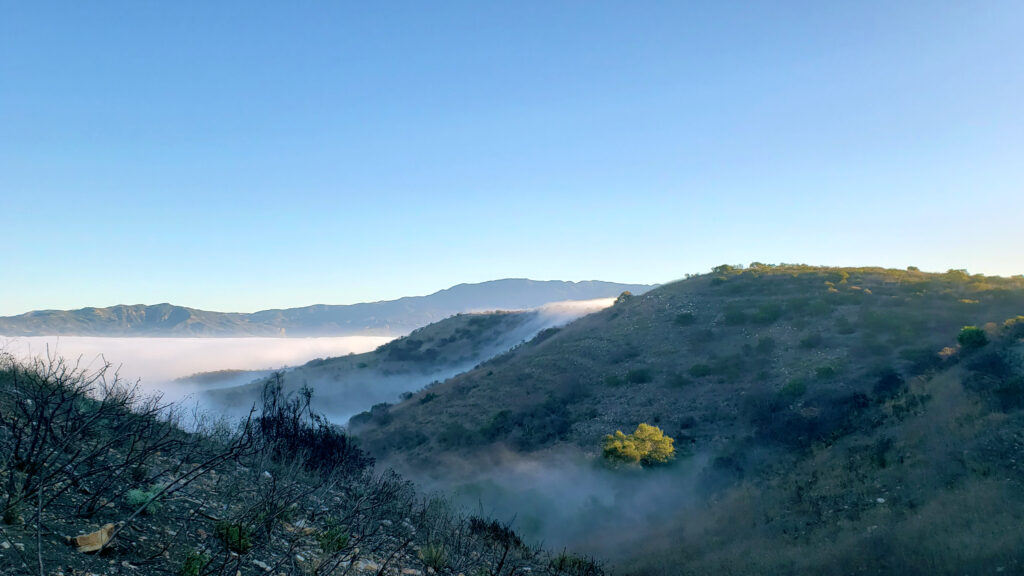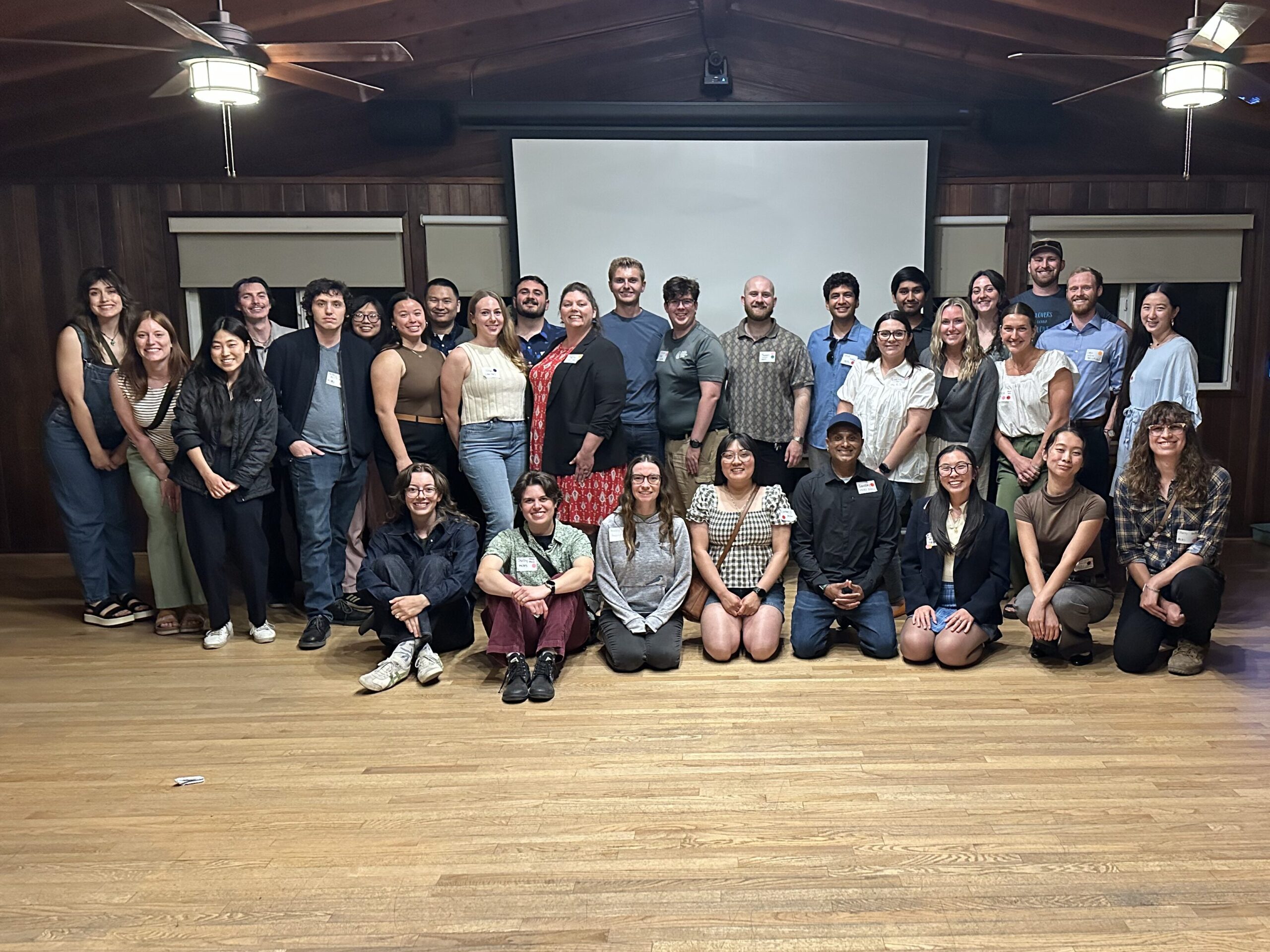Student Blog: Michelle dela Cruz
Like a Shrub
As I near the home stretch and reflect back on my experience of this master’s program so far, one word comes to mind: Resilience.
There’s no question that the past couple of years of being in a pandemic has been challenging for many people. Wearing masks and quarantining constituted “strange times” when I started this master’s program. There was some fear and apprehension in the uncertainty of it all, but also a sense of new possibilities for me. I came into the program expecting stress and feeling optimistic about being able to handle it. But then there was Zoom fatigue, financial strain, the terrible loneliness of social isolation, and an overall decline in health I didn’t expect. I was burnt out by the end of the first year and considered dropping out over the summer.
And yet, here I am with three months left before I graduate. It hasn’t been smooth sailing, but it points to some sort of resilience on my part, doesn’t it? But it’s not just me. For my final capstone project, my group and I are working with the Irvine Ranch Conservancy (IRC) to assess the resilience of their restoration project at Bee Flat Canyon in Irvine, California, which burned in the 2020 Silverado fire. More specifically, for our main project we are comparing the number of resprouting shrubs in restored, healthy, and weedy areas of coastal sage scrub (CSS) habitat. Shrubs might not have to worry about the pandemic or grad school, but they definitely have their own big challenges and ways of recovering.
If you were a CSS shrub
If you were a shrub living in CSS, your environment would be fairly dry, vulnerable to drought and wildfire, and situated near the coast. Some shrub communities live near the beach, while others are located further inland, but they occur from the Central Coast of California to the northern region of Baja Mexico. Unfortunately, large areas of healthy CSS are in serious decline and often divided into fragments due to urban development, agriculture, and conversion to grasslands. CSS has a generally open canopy, meaning there would be some open areas between you and your neighbor shrubs. When it gets hot and dry for long periods over the summer, you and your CSS shrub friends try to avoid getting dehydrated and losing water through your leaves (known as evapotranspirative stress) by just shedding them altogether. You might not look so hot in the summer, but shrubs can die if they lose too much water from evapotranspirative stress. Also, because of the long periods of drought, most CSS shrubs tend to be short, between 0.5 – 2 meters tall. It doesn’t rain a whole lot in your environment, but when it does, you want to be able to absorb water quickly using shallow roots that are close to the surface of the ground.
Restoring CSS shrubs at Bee Flat Canyon
If you were a shrub that got planted as part of the Bee Flat Canyon restoration project, you would have been planted as a seed sometime between 2011 and 2013. Restoration workers on the project removed weeds and helped you to grow until you matured into a healthy young shrub. By June 2020, you were part of a successful restoration project and a newly restored CSS community of about 27 total acres at Bee Flat Canyon. And then, after all that hard work, you might have burned up five months later in the 2020 Silverado fire. The fire cycle, or number of years between wildfire events, at Bee Flat Canyon is 15 – 20 years. The last fire that burned in the area was the Santiago fire in 2007, so the fire cycle was shorter than expected. Fortunately, CSS shrubs are fire-adapted, so they have ways of surviving fire.
Fire survival strategies
If you’re a shrub that was burned by a severe wildfire, your go-to method for surviving is to simply start growing again, if you can. After the fire, your leaves and young branches would have burned away leaving a shrub skeleton of your large, woody branches. However, you have spots at the base of your shrub skeleton called adventitious buds where you can start growing new branches and leaves again, known as crown sprouting. This happens most often in younger shrubs because older shrubs tend to have more woody growth that covers their adventitious buds, almost like a callous or scar tissue. Crown sprouting is not a one-size-fits-all strategy for surviving fire though. In longer fire cycles where fires occur less frequently, the other life strategy for surviving fire may be more suitable: producing seeds and seedlings.
Creating a bunch of seedlings doesn’t help you, as an individual shrub, survive fire per se, but it does help to pass on genetic material and maintain shrub density in the community. If given enough time to mature, seedlings might have a better chance of survival by outliving older crown sprouts and having a higher ability to resprout in the event of fire. Even though crown sprouting is a better strategy for recovery in general, many shrub species still try to produce seed each year to help maintain the seed bank in the soil which can get wiped out by fire.
Crown sprouting in the field
My capstone group and I had just arrived at our first field site to collect data for our project. We took a quiet moment to ground ourselves in the observation and experience of nature before starting our work. It’s 7:30 in the morning on a brisk autumn day, and a wide blanket of fog gently rolls between the foothills of Bee Flat Canyon, filling its valleys with a smooth layer of soft white fluff. Distant birdsong floats in the air as the rising sun brings a golden warmth to the landscape. Across the valley, clusters of shrubs pepper the hillsides, creating patches of coastal sage scrub where birds perch and sing. But where I sit, bare shrubs reach from the ground with charred branches like skeletons emerging from the earth. The destructive evidence of fire throughout the scene is dismal at a glance. Then, upon closer inspection, crowns of bright foliage peek out from the base of shrub skeletons here and there. Despite the setback, the landscape shows recovery, resilience, and hope.

A little over half a year ago, I thought about quitting this program. It makes me think about how a burnt landscape might look hopeless if I don’t look very hard, and maybe if I took a moment to look for a good sign, no matter how small, I might find something to give me hope in a seemingly dark situation. Like a resilient shrub after wildfire, I can face a setback, grow from it, and continue forward.
References
Atwood, J. L. 1993. California Gnatcatchers and coastal sage scrub: the biological basis for endangered species listing. Pages 149-166 in J. E. Keeley, ed. Interface between ecology and land development in California. Southern California Academy of Sciences, Los Angeles.
CalPIF (California Partners in Flight). 2004. Version 2.0. The Coastal Scrub and Chaparral Bird Conservation Plan: a Strategy for Protecting and Managing Coastal Scrub and Chaparral Habitats and Associated Birds in California (J. Lovio, lead author). PRBO Conservation Science, Stinson Beach, CA. http://www.prbo.org/calpif/plans.html.
Conlisk, E., Swab, R., Martinez-Berdeja, A., & Daugherty, M. P. (2016). Post-fire recovery in coastal sage scrub: seed rain and community trajectory. Plos one, 11(9), e0162777.
Irvine Ranch Conservancy. (2011). Restoration Plan Framework for Bee Flat Canyon. Irvine Ranch Conservancy.
Irvine Ranch Conservancy. (2012). Restoration Implementation Plan: Bee Flat Canyon. Irvine Ranch Conservancy.
Malanson, G. P., & O’Leary, J. F. (1982). Post-fire regeneration strategies of Californian coastal sage shrubs. Oecologia, 53(3), 355-358.
Malanson, G. P. (1985). Simulation of competition between alternative shrub life history strategies through recurrent fires. Ecological Modelling, 27(3-4), 271-283
Malanson, G. P., & Westman, W. E. (1985). Postfire succession in Californian coastal sage scrub: the role of continual basal sprouting. American Midland Naturalist, 309-318.
McCaull, J. 1994. The Natural Community Conservation Planning Program and the coastal sage scrub ecosystem of southern California. Pages 281-292 in R. E. Grumbine, ed. Environmental Policy and Biodiversity. Island Press, Washington, D.C.



